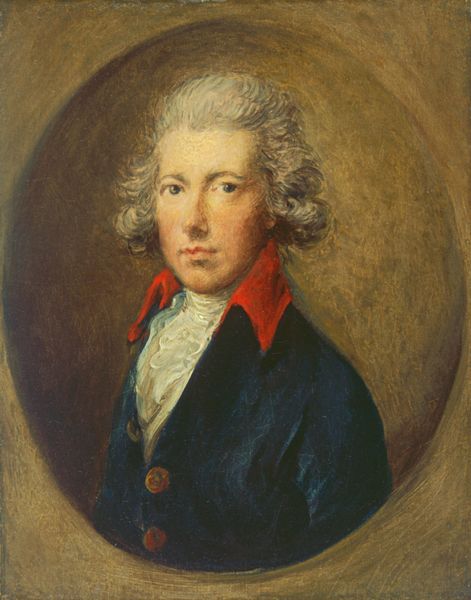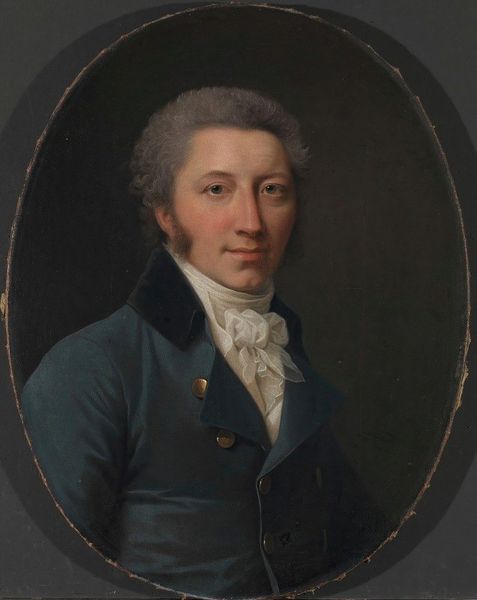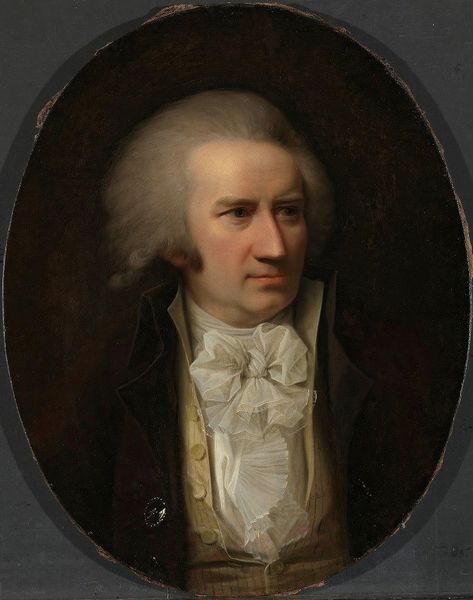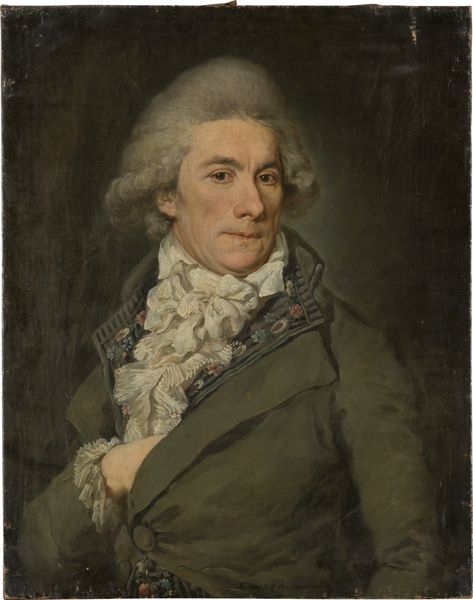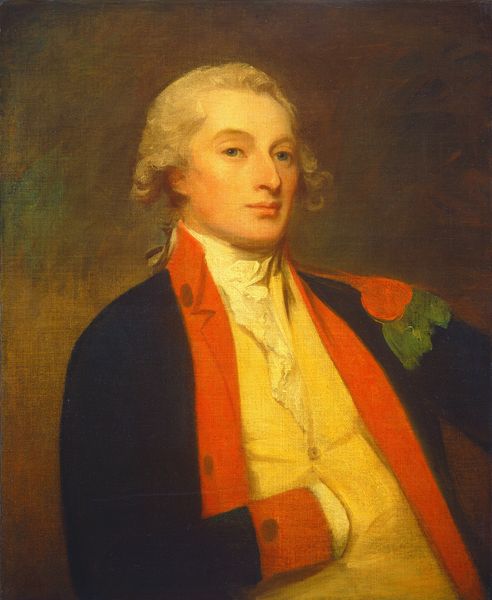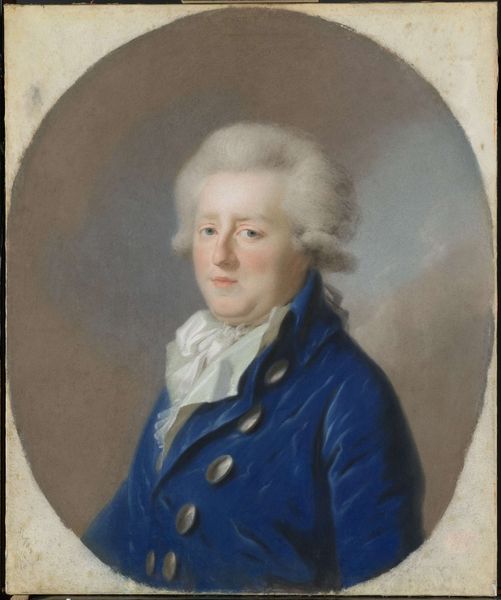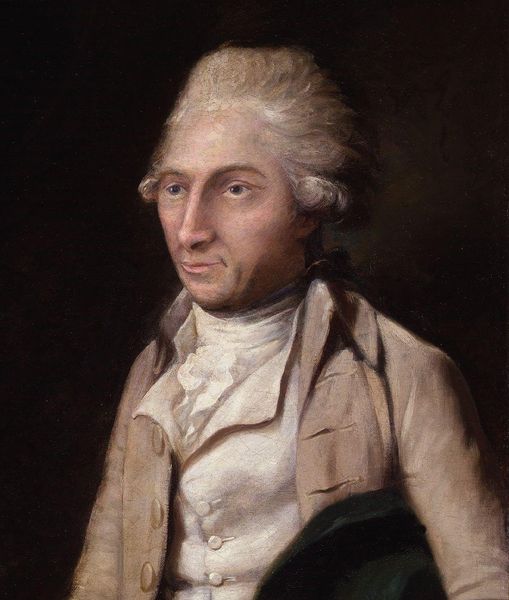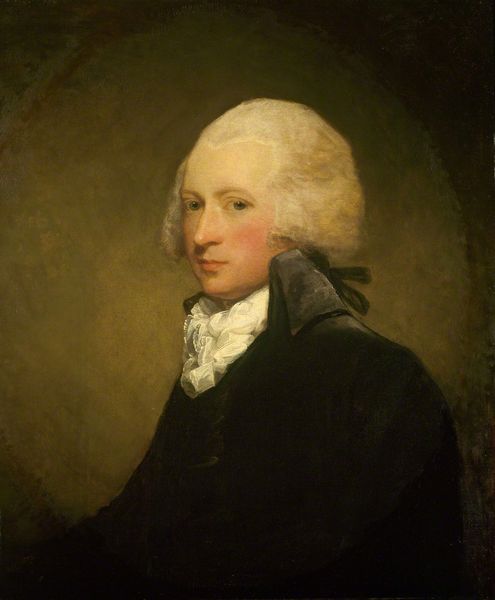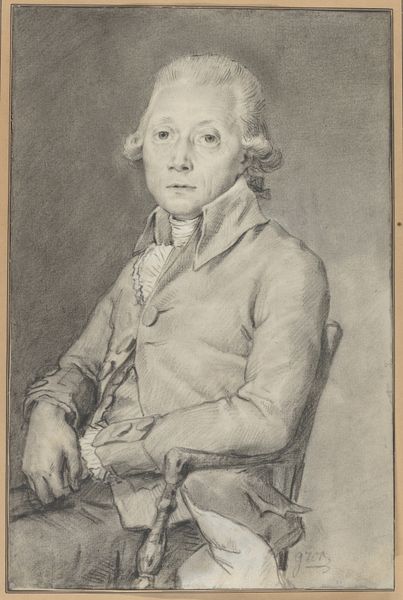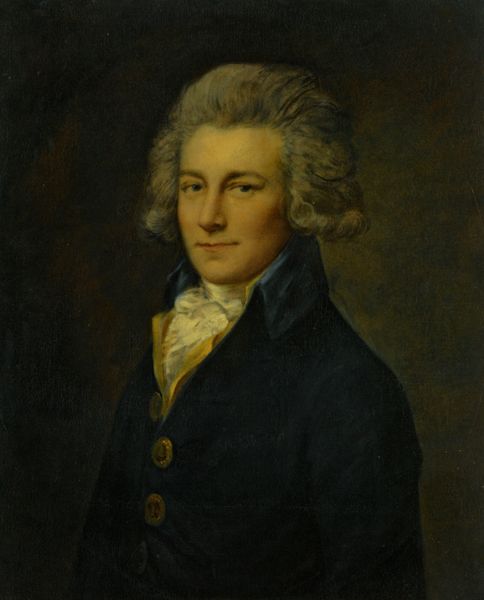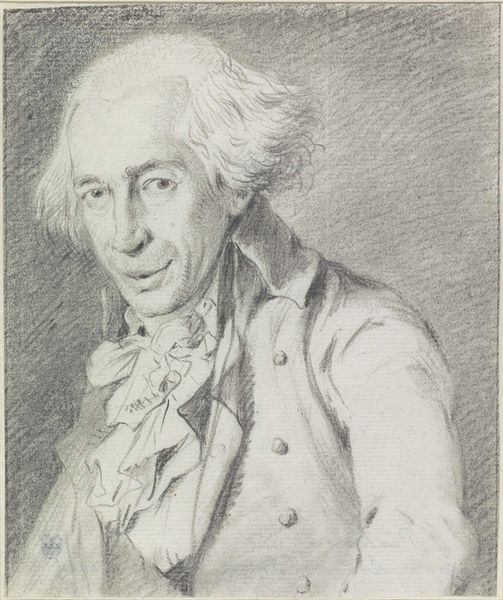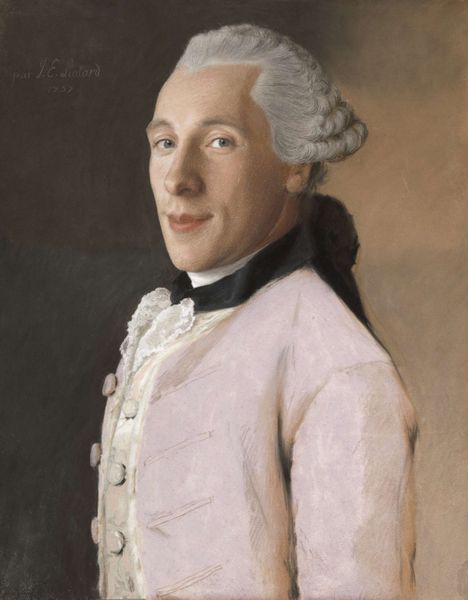
Dimensions: 73.5 x 58.5 cm
Copyright: Public domain
Editor: Here we have Thomas Gainsborough's "Self-Portrait" from 1787. It's an oil painting. I’m really struck by the softness of the brushstrokes. How do you approach looking at a painting like this? Curator: Considering this was produced near the end of Gainsborough's life, I think it is crucial to note how the social status and increased commodification of portraiture shaped both its creation and reception. His rapid brushwork here, visible layering of paint and the almost informal attire – speak volumes about both the market forces at play and the changing position of the artist. Why this 'unfinished' quality? What are your thoughts about the role of labor here, considering its context? Editor: That’s fascinating. The looser style almost feels rebellious. Could it be a commentary on the more formal academic painting styles of the time, maybe pushing back against the demands of wealthy patrons who wanted every detail meticulously rendered? Curator: Precisely. Also consider the availability and quality of pigments in the 18th century. How might those materials – and their cost – affect the choices Gainsborough made in his practice? The materials shaped the artist, just as the artist shaped them. Furthermore, Gainsborough strategically blurs the boundaries between portraiture as a craft and “high art”. How might this challenge ideas surrounding artistic labor in 1787? Editor: So, he's using material constraints and blurring lines to make a statement. I hadn't thought about how much the materials themselves could be part of the message. Thank you! Curator: Indeed. Looking beyond the surface helps to reveal layers of social and economic meaning within even the most familiar artworks.
Comments
No comments
Be the first to comment and join the conversation on the ultimate creative platform.
